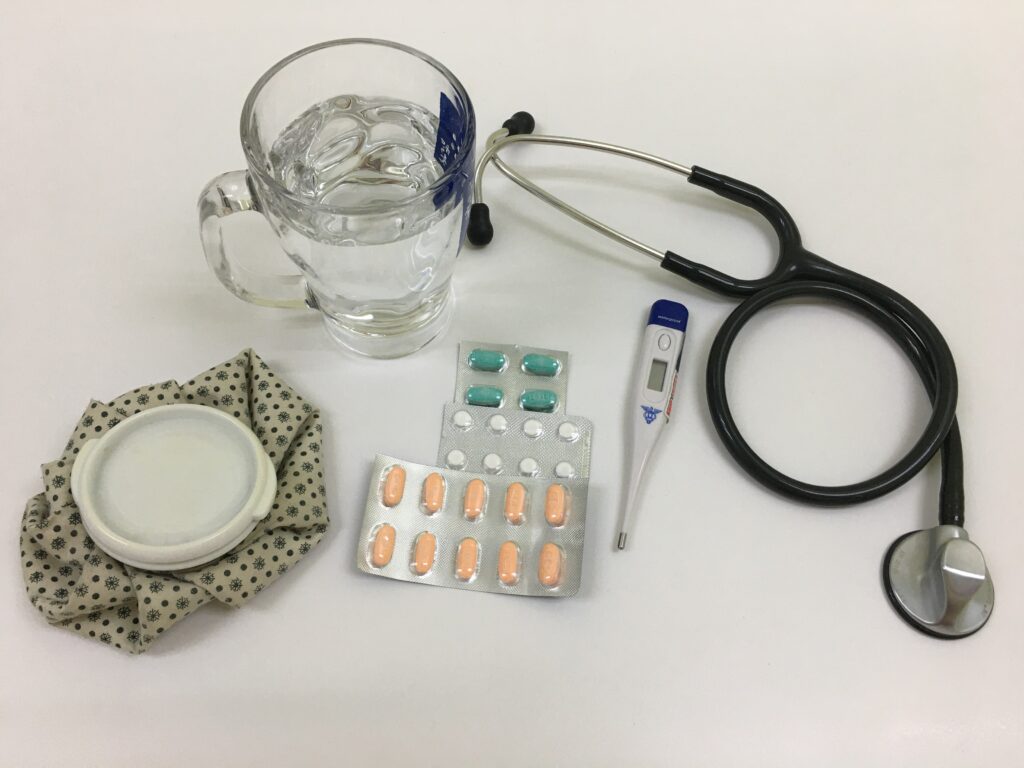One minute you're fit as a fiddle and the next you feel tired and run down. A cold, cough, hoarseness... This can be a harmless cold or an actual flu. However, COVID-19 can also cause these symptoms.
Common cold (flu-like infection)
During a cold, the upper parts of the respiratory tract are infected with pathogens. It usually begins two to four days after infection by droplet infection and usually lasts a week or less.
Symptoms

Rhinoviruses are responsible for 30 to 50 percent of colds. These attach themselves to the mucous membranes of the nose and throat and multiply there. The immune cells fight these viruses, which leads to typical cold symptoms:
- Throat and swallowing problems
- Hoarseness
- Cough
- Redness of the throat
- Increased mucus production
Course
People like to divide the common cold into three different phases.
The initial phase (Day 1 & 2): Already one or two days after infection, the first cold symptoms appear. Tiredness, sore throat, headache and aching limbs in a mild form announce the onset of the disease.
The acute phase (day 3 to 5): Now the symptoms show themselves in a clearly intensified form. The nose runs or is blocked, headaches and aching limbs increase and sore throat makes swallowing difficult. In addition, in rarer cases, there may be an elevated temperature. However, sudden onset of high fever is more indicative of a "real" flu than of an influenza-like infection.
The late phase (day 6 to 9): Headache and aching limbs subside, and the nose gradually clears. On the other hand, a dry irritating cough may develop, which may increase over time to a persistent cough, sometimes with viscous mucus.
Flu (Influenza)
The real flu, also called influenza, is an acute illness of the respiratory tract. The big sister of the common cold should not be underestimated, because it does not always run without complications. Although severe courses can occur in people with a healthy Immunesystem are relatively rare, deaths occur time and again during the dreaded flu epidemics. Elderly people and children are particularly at risk.
Symptoms
Difference: cold and flu
The flu and the common cold are easily distinguished by their symptoms:
With a Flu the symptoms start very suddenly and very violently. You feel as if a train has run over you: Sore throat, headache, aching limbs, fatigue and possibly a high fever. All you really want to do is go to bed.
A Cold on the other hand, drags on like this. It begins, for example, with a sore throat, perhaps headache and aching limbs, but in a much weaker form than with the flu. Fever is extremely rare in this case.
Cold, flu - and corona: How does COVID-19 complicate diagnosis?
First of all: To be sure that your symptoms are not Corona, you always need a test. The problem here is that this virus behaves like a chameleon and cannot be classified symptomatically. On the one hand, the symptoms can occur as gradually as with a cold, but also as suddenly as with the flu. However, they can also be completely different. Therefore, corona cannot be identified by specific symptoms. Although the often-described loss of the sense of taste and smell does occur, the absence of these symptoms is not proof that it is not covid-19. For this reason, testing is always required in this case.

Many of the symptoms of a real flu are similar to those of a cold. However, the decisive factor for flu is not only the intensity of the symptoms, but in particular the sudden onset of acute symptoms. In addition, the flu is always associated with high fever. The typical symptoms of flu are:
- Fever between 38 ° C and 40 ° C or higher
- Muscle and joint pain throughout the body
- Headache & Migraine
- Sore throat
- Severe fatigue and tiredness
- Dry cough without mucus
- Blocked and / or runny nose
- Chills





